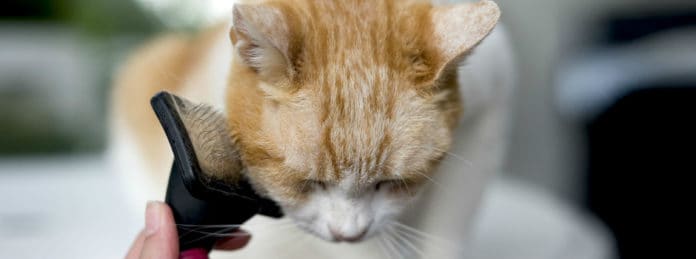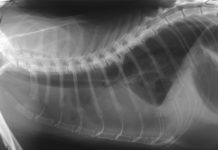Feline symmetrical alopecia (hair loss) or pattern baldness in cats is a distinctive form of hair loss that affect felines. It is characterized by the hair loss, which form in a symmetrical pattern having no gross changes on the skin. This particular symptom is a characteristic manifestation of several underlying conditions –including infection or parasites. There is actually no apparent breed, gender, or age that is more vulnerable to this particular form of hair loss in cats. Get to learn more about this feline hair condition –read on to this article!
Pattern Baldness in Cats: What is this feline condition?

The pattern baldness in cats or feline symmetrical alopecia is a discreetly new term that is given to the felines with baldness. This is because vet experts once thought that this condition to be directly in connection to the endocrine disease. They even term it as the feline endocrine alopecia. Nonetheless, new research shows that the pattern baldness in cats is actually seen to be a clinical symptom, which is in relation to pruritic causal diseases. This new research is what has allowed the vets to gather a much better understanding of the illness that has helped in the tools that are used in treating it.
In the event that the cat profusely sheds, has unusual bald spots on its fur, as well as has slow hair growth, he or she might have a feline pattern baldness. Moreover, the pattern baldness is a form or type of alopecia, a deficiency of hair follicles in a certain area of the body were there’s previously some fur present. Additionally, a cat may often lose its hair in a genital region, on the hind legs’ side, in the underbelly, and in the underside of the cat’s tail. Additionally, the pattern baldness in cats is due to various causal conditions, including allergies, parasites, hormonal imbalances, and skin infections.
Causes of Feline Pattern Baldness
The most common among the causes of pattern baldness in felines is a causal allergy to flea saliva. A cat that has a hypertensive immunity may breakout in small red bumps, lose hair, hives, and itchy skin die to many flea bites. Nonetheless, feline pattern baldness has already been known to be caused by various illnesses, just like the following:
- Pancreatic neoplasia
- Crushing’s disease
- Hypothyroidism
- Hyperthyroidism
- Yeast infection in the skin
- Fungal infection of the skin
- Mites
- Atopy
- Dietary allergies
- Over-grooming
Symptoms of Feline Pattern Baldness
The major symptoms of pattern baldness in cats is symmetric kind of baldness, which is found on the genital area, underside the tail, etc. Further, the hair shafts may be broken and may have a prickly feel to them when the owner gets to stroke the cat’s coat. Moreover, the coat might also start to grow back in the patches, yet the growth time may appear delayed or may take much longer to reappear than the normal hair might do. Varying on the particular cause of the pattern baldness the cat may show accompanying symptoms, just like the following:
- Hyperpigmentation
- Lichenification
- Erythema
- Excessive shedding
- Dandruff
- Dry or scaly skin
- Pruritic skin
Prognosis of Feline Pattern Baldness

In the event that the cat pattern alopecia starts to become more evident, it is vital to diagnose the main cause. Due to the fact that there‘s a wide array of major causes, the diagnostic procedures might vary depending on the other outward signs and primary test outcomes.
Combing of the hair using a fine comb might identify flea excrement or fleas if the parasites are to be blame. Additionally, a microscopic test of the hair may show if the alopecia is actually self-induced by displaying broken hairs, instead of hair that’s come out of the root. Furthermore, a fecal examination might also reveal an excessive hair, tapeworm, mites, or fleas. Some other diagnostic exams, which might be done comprise urine analysis, as well as thyroid test.
Treatments for Feline Pattern Baldness
The treatments for the pattern baldness in cats varies on the main cause of the irregularity. Moreover, skin infections may be cured using a fungicide for yeast or fungal infections, as well as antibiotics for bacteria. In the event that the baldness is due to a parasite like lice, fleas, or mites, they may be treated easily using shampoos, dips, and topical treatments. In the event that the main cause for the condition is due to a hormonal imbalance, the vet might prescribe hormonal therapy medications, as well as a change in the diet.
The daignosis for the condition varies on the causal condition, whihc causes the cat to loose hair and become bald. In most instances, once the cat has already had an appropriate prognosis and treatment has been received, the hair grows back. Pay your vet a visit and talk about the case of your cat for a clear daignosis.









